
-
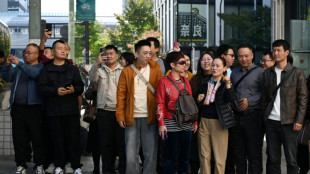 Fury in China over Japan PM's Taiwan comments
Fury in China over Japan PM's Taiwan comments
-
Carbon capture promoters turn up in numbers at COP30: NGO

-
 Japan-China spat over Taiwan comments sinks tourism stocks
Japan-China spat over Taiwan comments sinks tourism stocks
-
No Wemby, no Castle, no problem as NBA Spurs rip Kings

-
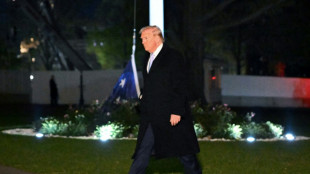 In reversal, Trump supports House vote to release Epstein files
In reversal, Trump supports House vote to release Epstein files
-
Gauff-led holders USA to face Spain, Argentina at United Cup

-
 Ecuador voters reject return of US military bases
Ecuador voters reject return of US military bases
-
Bodyline and Bradman to Botham and Stokes: five great Ashes series

-
 Iran girls kick down social barriers with karate
Iran girls kick down social barriers with karate
-
Asian markets struggle as fears build over tech rally, US rates

-
 Australia's 'Dad's Army' ready to show experience counts in Ashes
Australia's 'Dad's Army' ready to show experience counts in Ashes
-
UN Security Council set to vote on international force for Gaza

-
 Japan-China spat sinks tourism stocks
Japan-China spat sinks tourism stocks
-
Ecuador voters set to reject return of US military bases

-
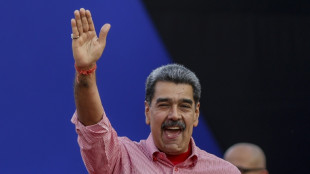 Trump signals possible US talks with Venezuela's Maduro
Trump signals possible US talks with Venezuela's Maduro
-
Australian Paralympics gold medallist Greco dies aged 28

-
 Leftist, far-right candidates go through to Chilean presidential run-off
Leftist, far-right candidates go through to Chilean presidential run-off
-
Zelensky in Paris to seek air defence help for Ukraine

-
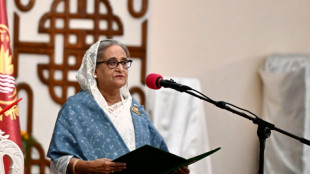 Bangladesh verdict due in ex-PM's crimes against humanity trial
Bangladesh verdict due in ex-PM's crimes against humanity trial
-
A pragmatic communist and a far-right leader: Chile's presidential finalists

-
 England ready for World Cup after perfect campaign
England ready for World Cup after perfect campaign
-
Cervical cancer vaccine push has saved 1.4 million lives: Gavi

-
 World champion Liu wins Skate America women's crown
World champion Liu wins Skate America women's crown
-
Leftist leads Chile presidential poll, faces run-off against far right

-
 Haaland's Norway thump sorry Italy to reach first World Cup since 1998
Haaland's Norway thump sorry Italy to reach first World Cup since 1998
-
Portugal, Norway book spots at 2026 World Cup

-
 Sinner hails 'amazing' ATP Finals triumph over Alcaraz
Sinner hails 'amazing' ATP Finals triumph over Alcaraz
-
UK govt defends plan to limit refugee status
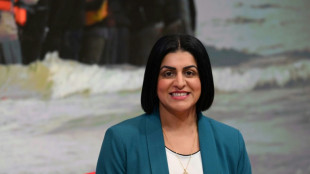
-
 Haaland's Norway thump Italy to qualify for first World Cup since 1998
Haaland's Norway thump Italy to qualify for first World Cup since 1998
-
Sweden's Grant captures LPGA Annika title

-
 Tuchel lays down law to Bellingham after England star's frustration
Tuchel lays down law to Bellingham after England star's frustration
-
Sinner caps eventful year with ATP Finals triumph over great rival Alcaraz

-
 Portugal book spot at 2026 World Cup as England stay perfect
Portugal book spot at 2026 World Cup as England stay perfect
-
Hakimi, Osimhen, Salah shortlisted for top African award

-
 Sinner beats great rival Alcaraz to retain ATP Finals title
Sinner beats great rival Alcaraz to retain ATP Finals title
-
Schenk wins windy Bermuda Championship for first PGA title

-
 Crime, immigration dominate as Chile votes for president
Crime, immigration dominate as Chile votes for president
-
Kane double gives England record-setting finish on road to World Cup

-
 World champions South Africa add Mbonambi, Mchunu to squad
World champions South Africa add Mbonambi, Mchunu to squad
-
Greenpeace says French uranium being sent to Russia

-
 'Now You See Me' sequel steals N. American box office win
'Now You See Me' sequel steals N. American box office win
-
Argentina beat Scotland after frenzied fightback

-
 Argentina beat Scotland after stunning fightback
Argentina beat Scotland after stunning fightback
-
Pope urges leaders not to leave poor behind

-
 Pressure will boost Germany in 'knockout' Slovakia clash, says Nagelsmann
Pressure will boost Germany in 'knockout' Slovakia clash, says Nagelsmann
-
Ecuador votes on hosting foreign bases as Noboa eyes more powers

-
 Portugal qualify for 2026 World Cup by thrashing Armenia
Portugal qualify for 2026 World Cup by thrashing Armenia
-
Greece to supply winter gas to war battered Ukraine

-
 India and Pakistan blind women show spirit of cricket with handshakes
India and Pakistan blind women show spirit of cricket with handshakes
-
Ukraine signs deal with Greece for winter deliveries of US gas


China, France to launch satellite to better understand the universe
A French-Chinese satellite will blast off Saturday on a hunt for the mightiest explosions in the universe, in a notable example of cooperation between a Western power and the Asian giant.
Developed by engineers from both countries, the Space Variable Objects Monitor (SVOM) will seek out gamma-ray bursts, the light from which has travelled billions of light years to reach Earth.
The 930-kilogram satellite carrying four instruments -- two French, two Chinese -- will lift off aboard a Chinese Long March 2-C rocket from a space base in Xichang, in the southwestern province of Sichuan.
Gamma-ray bursts generally occur after the explosion of huge stars -- those more than 20 times as big as the sun -- or the fusion of compact stars.
The extremely bright cosmic beams can give off a blast of energy equivalent to over a billion billion suns.
Observing them is like "looking back in time, as the light from these objects takes a long time to reach us", Ore Gottlieb, an astrophysicist at the Flatiron Institute's Center for Astrophysics in New York, told AFP.
- 'Several mysteries' -
The rays carry traces of the gas clouds and galaxies they pass through on their journey through space -- valuable data for better understanding the history and evolution of the universe.
"SVOM has the potential to unravel several mysteries in the field of (gamma-ray bursts), including detecting the most distant GRBs in the universe, which correspond to the earliest GRBs," Gottlieb said.
The most distant bursts identified to date were produced just 630 million years after the Big Bang -- five percent of the current age of the universe.
"We are... interested in gamma-ray bursts for their own sake, because they are very extreme cosmic explosions which allow us to better understand the death of certain stars," said Frederic Daigne, an astrophysicist at the Institut d'Astrophysique de Paris.
"All of this data makes it possible to test the laws of physics with phenomena that are impossible to reproduce in the laboratory on Earth."
Once analysed, the data could help to better understand the composition of space, the dynamics of gas clouds or other galaxies.
The project stems from a partnership between the French and Chinese space agencies as well as other scientific and technical groups from both nations.
Space cooperation at this level between the West and China is fairly uncommon, especially since the United States banned all collaboration between NASA and Beijing in 2011.
- Race against time -
"US concerns on technology transfer have inhibited US allies from collaborating with the Chinese very much, but it does happen occasionally," said Jonathan McDowell, an astronomer at the Harvard-Smithsonian Center for Astrophysics in the United States.
In 2018, China and France jointly launched CFOSAT, an oceanographic satellite mainly used in marine meteorology.
And several European countries have taken part in China's Chang'e lunar exploration programme.
So while SVOM is "by no means unique", it remains "significant" in the context of space collaboration between China and the West, said McDowell.
Once in orbit 625 kilometres (388 miles) above the Earth, the satellite will send its data back to observatories.
The main challenge is that gamma-ray bursts are extremely brief, leaving scientists in a race against time to gather information.
Once it detects a burst, SVOM will send an alert to a team on duty around the clock.
Within five minutes, they will have to rev up a network of telescopes on the ground that will align precisely with the axis of the burst's source to make more detailed observations.
K.Hassan--SF-PST




